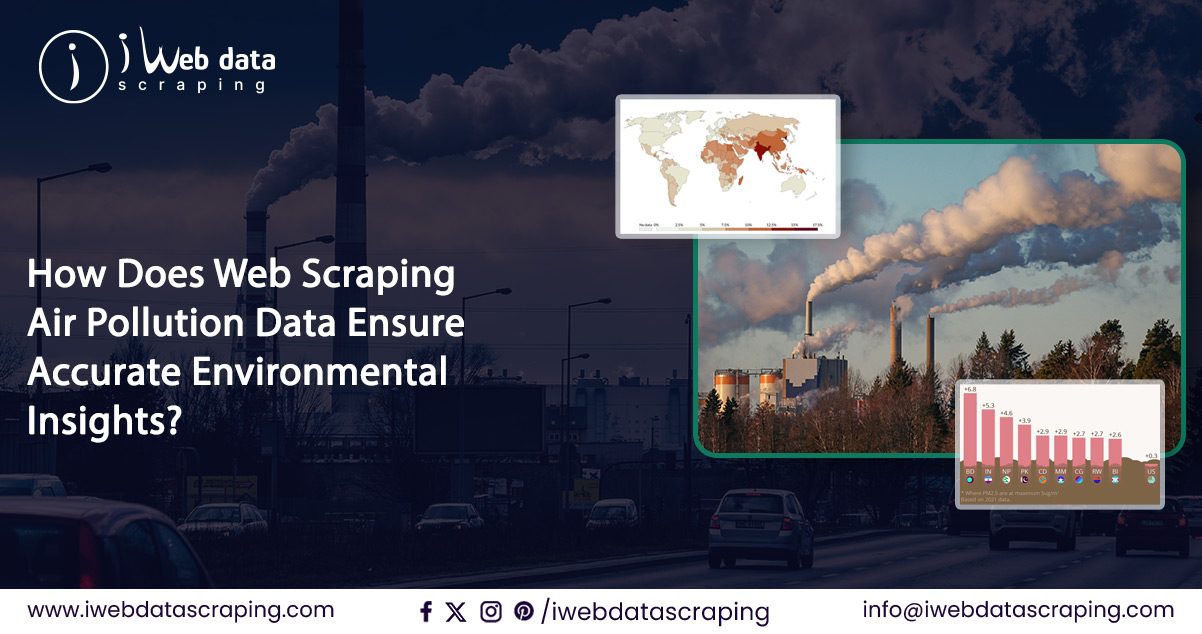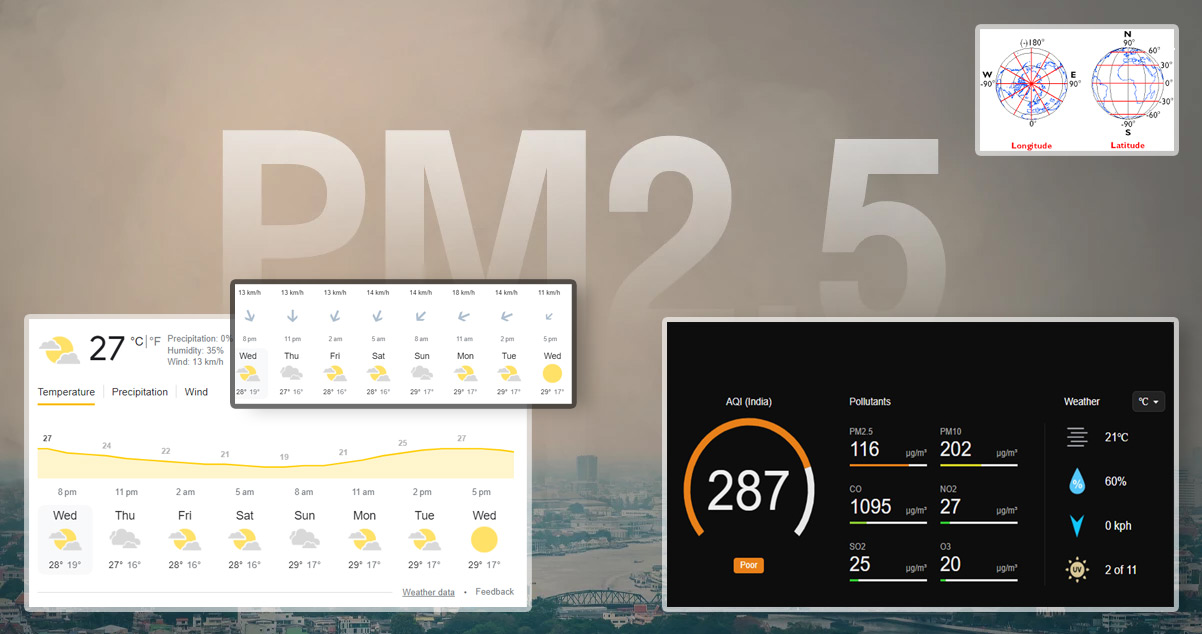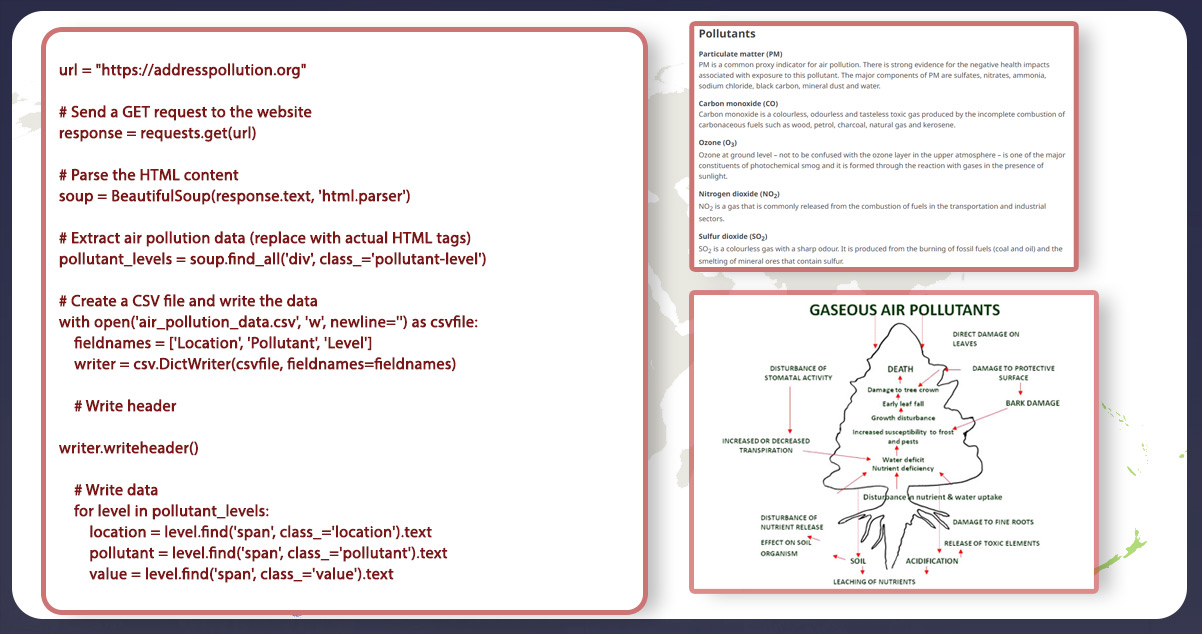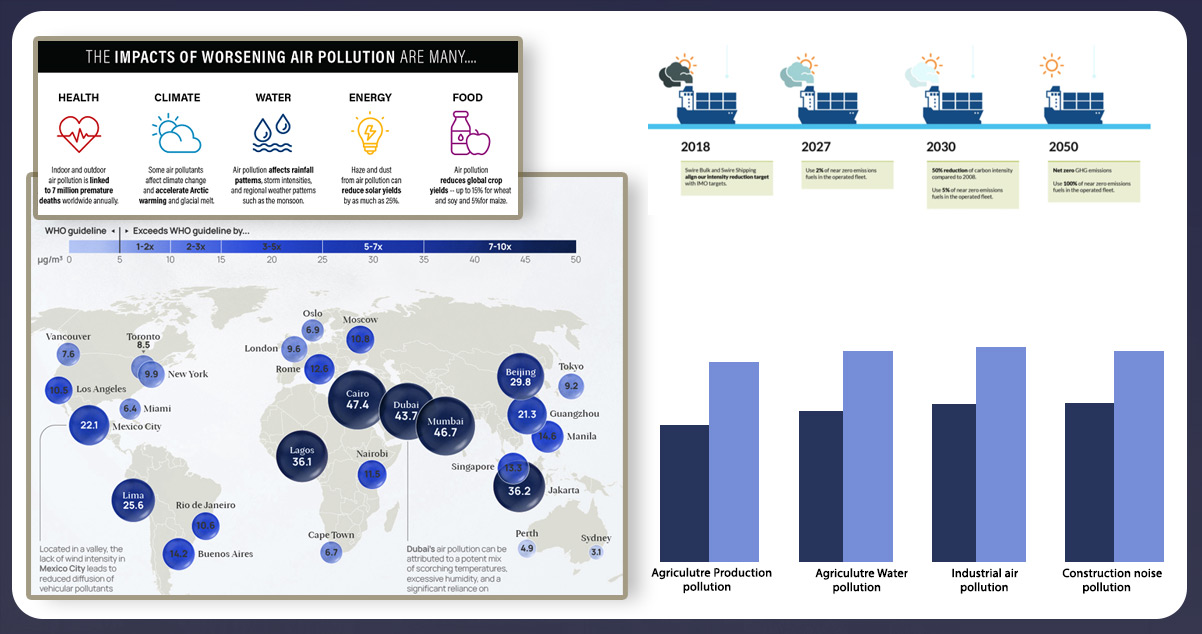
In the era of environmental awareness, access to real-time air pollution data plays a pivotal role in understanding and addressing the challenges of deteriorating air quality. Web scraping offers a powerful solution for aggregating air pollution data from various online platforms, providing a comprehensive and up-to-date view of atmospheric conditions. Specifically, platforms like https://addresspollution.org offer valuable insights into pollutant levels across different geographic locations. Through web scraping, one can programmatically extract this information, enabling environmental scientists, policymakers, and the general public to make informed decisions and implement targeted strategies for air quality improvement. This introduction sets the stage for exploring the step-by-step process of scraping air pollution data and integrating it into structured templates, fostering a data-driven approach to environmental management and public health initiatives.
Air pollution is a critical environmental concern, impacting the health and well-being of communities worldwide. Harnessing the power of web scraping, we can extract air pollution data from platforms like https://addresspollution.org, facilitating informed decision-making and public awareness.

Advisories or health recommendations based on current air quality
This article provides a step-by-step guide on web scraping for air pollution data and inserting it into a CSV template.
Visit https://addresspollution.org to familiarize yourself with the website's structure, the types of air quality data available, and how the information is available. Identifying the specific data you need (e.g., pollutants, geographical locations) is crucial for an effective web scraping strategy.
Select a web scraping tool or air pollution data scraper based on your programming proficiency and project requirements. Popular choices include Python libraries like BeautifulSoup and Scrapy or browser extensions.
Use your browser's developer tools to inspect the HTML structure of the website. Identify the HTML elements that contain the air pollution data you want to extract. It may include pollutant levels, geographic coordinates, timestamps, and other relevant information.
Develop a web scraping script using your chosen programming language and library. Below is an example using Python and BeautifulSoup:

Note: Customize the code based on the actual HTML structure of the website.
Execute your web scraping script to retrieve air pollution data from the website. Ensure your code adheres to ethical scraping practices, such as respecting the website's terms of service, avoiding aggressive scraping, and incorporating delays between requests to prevent server overload.
After scraping the data, review the CSV file to ensure accurate extraction. Clean the data by handling missing values, duplicates, or inconsistencies using air pollution data scraping services. This step is crucial for maintaining data integrity and reliability.

Conclusion: Web scraping for air pollution data emerges as an invaluable tool for environmental stewardship. By extracting real-time insights from platforms like https://addresspollution.org, we can make informed decisions, address health concerns, and enact targeted pollution control measures. This data-driven approach empowers policymakers, researchers, and communities to collaborate in creating sustainable solutions for cleaner air. However, it is crucial to conduct web scraping ethically, respecting the terms of service of each website, and ensuring responsible and legal use of this powerful technology in our collective efforts towards a healthier and more sustainable planet.
Feel free to contact iWeb Data Scraping for a wealth of information! Our dedicated team will assist you whether you require web scraping service or mobile app data scraping. Connect with us today to discuss your specific requirements for scraping retail store location data. Let us demonstrate how our personalized data scraping solutions can provide efficiency and reliability tailored precisely to meet your unique needs.